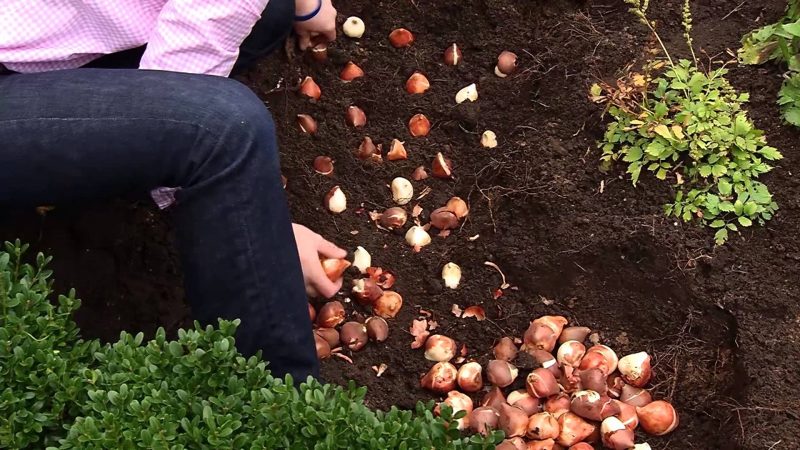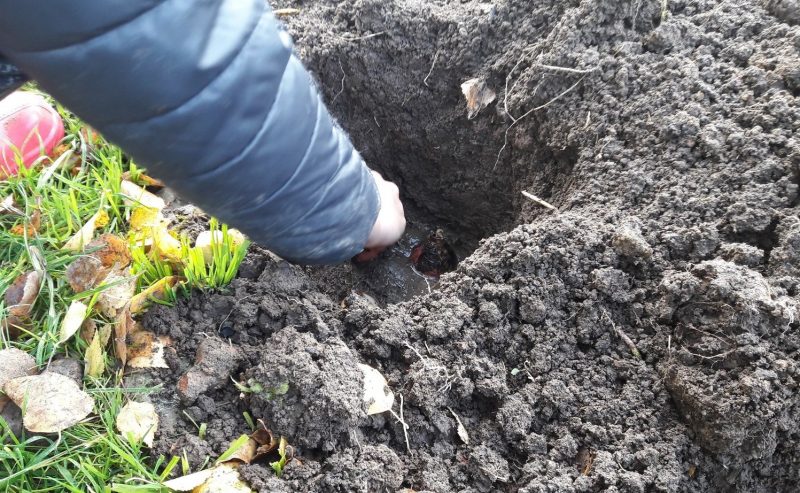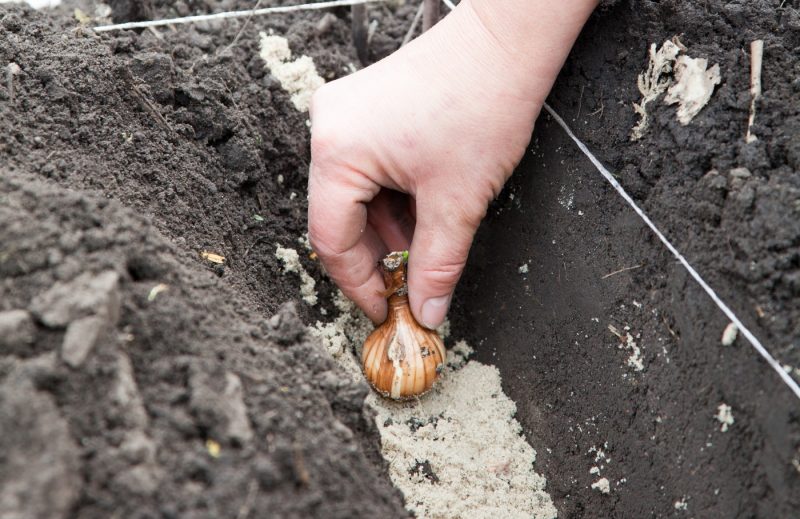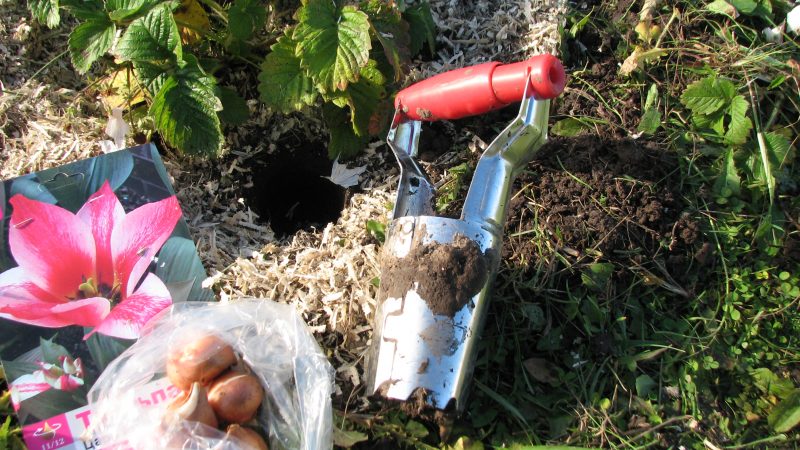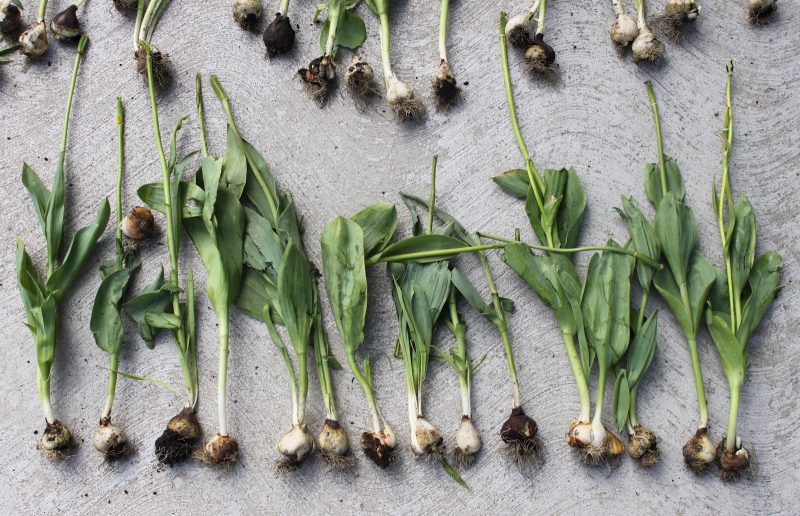The effective flowering of tulips is determined not only by competent care of the plants, but also by the timing of planting. Therefore, the question of when to plant tulips is one of the most important when growing them.
Material Content:
When to plant tulips and how: terms
Experienced flower growers recommend planting tulips in the fall, because for laying flower buds and creating a stock of nutrients, you need coolness.
Many people are interested in which month they plant tulips? The answer to this question depends on the climatic conditions of the area and the weather conditions of a particular year. This is usually done when the topsoil cools down to 7-8 °, which in the central part of Russia falls in the second half of September, in October in the southern regions of the country.
Some gardeners practice a later planting - in late October and even in December under the snow. This is possible under the condition of sheltering plantings for the winter with foliage or dry grass.
If for some reason it was not possible to plant in the autumn, then as an exception this can be done in the spring, after having previously planted the planting material for 10-12 hours in a cool place, for example, in a refrigerator.
Spring planting is carried out immediately after melting snow, at daytime temperatures of 8-10 ° heat. In the case of a cold lingering spring, the bulbs are germinated indoors, planted in containers of suitable size, for example, peat cups. Sprouted tulips are gradually accustomed to the open air, and then transplanted to flower beds by transshipment method.
Tulips planted in spring will bloom later and not as abundantly as they do after autumn planting.
Read also:tulips in the open field
Soil preparation and onion cultivation before planting
To place tulips, open sunny areas protected from the winds are suitable. Flowers like nutritious and well-permeable neutral or alkaline soils and poorly tolerate water stagnation, leading to rotting of bulbs.
Soil on the site selected for planting is prepared in 1.5-2 weeks:
- dig a depth on the bayonet of a shovel;
- exempt from weeds;
- sand is brought into clay lands;
- in acidic - ash or dolomite flour (200 g / sq. m);
- inferior lands are enriched with fertilizers.
Bulbs selected for planting:
- inspect, discarding dried, soft, with mechanical damage and having dark spots at the base;
- immediately before planting, they are disinfected, immersed for 30 min in a solution of pink potassium permanganate or any fungicide (Vitaros, Maxim, Fitosporin). This will significantly reduce the risk of developing fungal diseases of the bulbs.
Planting tulips in open ground or baskets
Planting tulip bulbs is carried out in rows or curtains (groups) directly into the soil or special devices (baskets, nets).
Depending on the chosen method, they dig:
- small indentations in the form of grooves or trenches for planting in rows;
- pits for receiving curtains.
Bulb plants are conveniently planted using a commercially available planting cone. When using it, there is no need to dig holes and grooves, and the presence of a scale of divisions will allow more accurately determine the depth of embedment. It should be 3 times higher than the height of the bulb.
Bulbs are laid down in the recesses with the bottom down at a distance of 5 to 10 cm, without pressing or screwing into the soil. This can damage the root buds.
After that, they are covered with earth. Watering is necessary only when planting in dry soil.
Many flower growers practice planting tulip bulbs in special containers or baskets, which can be purchased in specialized stores or use available and suitable in terms of properties, size of the container. Their use greatly simplifies the planting and digging of bulbs, and also allows you to get a thicker decorative curtain of flowers.
Planting in baskets is carried out according to the same scheme as with the usual method, with the exception of two small nuances:
- the landing recess in shape must match the shape and size of the basket;
- the bulbs spread to the bottom tightly (every 1.5-2 cm).
It is interesting:when to transplant irises
Fertilizer during planting, during vegetation, after flowering
Tulips, especially ordinary ones, called Darwin hybrids, are quite unpretentious. On suitable soils, they develop well without special care, including top dressing.
Fertilizing will significantly increase the decorative flowering.
Tulips feed 3 times:
- The first time - during planting, adding humus or compost to the recesses. In addition to organic matter, soils poor in nutrients are added with mineral additives of superphosphate and potassium chloride - 50 g / sq each. m
- Reapply fertilizers after the appearance of the first leaves, using complex mineral additives, for example, Kemiru Universal.
- The last, third, top dressing is carried out 2 weeks after flowering using phosphorus-potassium supplements, for example, potassium monophosphate.
Leaf cutting
After flowering, which is in the midst of summer, tulips lose their decorative appearance. Their leaves and shoots gradually turn yellow, and then dry. Some gardeners, trying to preserve the picturesque appearance of the flower beds, cut leaves and shoots, without waiting for them to wither. This is not worth doing.
After flowering, the plant continues to develop, only now the emphasis of this development is mixed on the underground part of the flower - the bulb, to which the nutrients formed in the leaves go. Without the latter, the bulb is doomed to starvation and, at best, weak flowering.
The signal that the bulb is sufficiently “full” is the complete yellowing of the leaves. As a rule, this occurs 5-6 weeks after flowering. As soon as this happens, the leaves and shoots can be cut off, leaving a small stump. Many flower growers prefer not to cut, but to tear off leaves. If the leaf does not come off effortlessly, it means that the flower still needs it.
The unsightly appearance of faded tulips can easily be masked by planting other flowering plants nearby, for example, lungwort, irises, lilies, hazel grouse or phlox. Grouse bulbs have a specific smell that scares away rodents coming to feast on the future planting material of tulips, so their planting next to the latter is doubly justified.
Digging bulbs and storage conditions
In the middle zone, tulips are dug up annually, in late June or early July.
The need for this mandatory event is due to several reasons:
- the gradual deepening of the bulbs, due to which each subsequent spring the sprout requires more strength and time for germination, which negatively affects flowering.
- the annual formation of children on the main bulb, which are separated after digging. If this is not done, a rather dense nest will form over time, which does not allow the plants to fully develop.
Digging up tulips is better by grades, starting with the earliest.
- Bulbs are freed from the ground and examined, rejecting the sick and injured.
- The selected ones are washed in a weak (5%) solution of potassium permanganate and dried outdoors in the sun or in a room under a lamp.
After drying, the bulbs are sorted by size into large, medium and small ones, then laid out in 2 layers in storage containers (boxes or boxes with pre-made ventilation holes), pouring with dry shavings.
Capacities are placed in a room with a constant air humidity of not higher than 70% and a certain temperature regime.
| Period | Temperature mode |
|---|---|
| The first 3-4 weeks after digging | 23-25 ° C |
| During august | 18–20 ° C |
| September, until landing | 16-18 ° C |
Abrupt changes in temperature or humidity can lead to cracking of the bulbs and the appearance of rot.
Proper storage of bulbs and timely planting will give you a bright flowering and spring mood.



